Since I was the only unmarried EOOW, I spent most of my time on the midnight shift from 9pm until 8am, at which time I could start to work on my MPA responsibilities. It was a demanding schedule but
usually involved stimulating and challenging tasks either in administration, which involved writing many procedures, operations, or training, or plant operational testing. Bringing the systems of the reactor plant, the
propulsion plant, and the ship to life was a very different experience than anything that I had experienced thus far in my career.
The new construction test program of the nuclear reactor and propulsion plant was an exhilarating and learning experience. We stretched the plant to the limits of its design capabilities. Transient tests
from 15% reactor power to 100% reactor power in 10 seconds and back to 15%—better than a Corvette. We verified the predicted response to various casualties. The test program not only provided a deep insight into the capabilities
of the nuclear propulsion, but also an appreciation for the importance of the operational formality expectations of the Naval Nuclear Program.
During the test program, the necessity for formal communications, procedural adherence, and clear command and control at all times became apparent. While no incident during the test program caused serious
damage, the after-action evaluations and lessons learned from the incidents that did occur usually pointed to a failure in operational formality as a root cause or significant contributor.
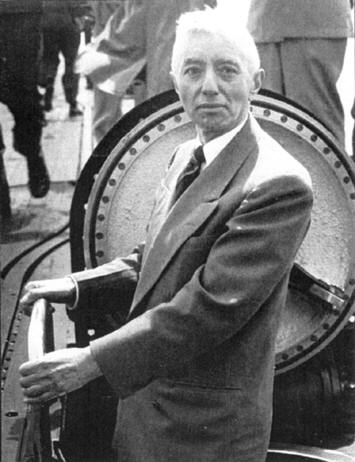 Sea Trials
Sea Trials
The highlight of the new construction period is sea trails, following successful completion of the pier side test program. For the initial sea trials, Admiral Rickover is aboard and in charge, which adds
a significant level of stress and challenge to an already challenging event. After all, this was the first time that the crew had operated together at sea with a ship that had never been to sea before. To add to the challenge,
there was a severe nor’easter in the area.
The initial period of the sea trails is conducted on the surface and until certain tests are completed, the submarine is not authorized to submerge. By the time Sunfish was ready for the first dive,
almost everyone aboard was sick—some too sick to stand normal watch. The presence of Admiral Rickover and his party just added to the challenge. All the required tests were completed satisfactorily within the planned two-day
period, after which Admiral Rickover was to leave the ship.
However, due to the storm the conditions for personnel transfer could not be met, so we were privileged to have him aboard for a couple extra days, which was not a problem except the supply officer was
getting low on the special treats that were onboard for the Admiral.
One of the milestones in the career of a nuclear submarine officer is to become qualified as engineer. Engineer qualification includes a comprehensive test and interviews at the headquarters of Naval
Reactors, which may or may not include an interview with Admiral Rickover. Under normal circumstances, the prospective engineer has a dedicated period to study for the examination. In my case in new construction, the dedicated
time to study was one Saturday and whatever time I could find while on shift work supporting the new construction efforts.
However, the time in my career had come to complete my engineer qualification, so off I went to Washington. Fortunately, I passed and was qualified as Engineer Officer of a Nuclear Submarine. Upon
completion of the qualification as was the normal practice, I went to the Bureau of Naval Personnel to check with my detailer as to my choice of next assignment. He explained to me that since I was in new construction, I could
not be transferred until at least commissioning, so he could not discuss next assignments—wrong!!
Within a couple weeks following my return to Quincy, my commanding officer was informed that as soon as the next sea trial was completed, I was to be transferred to USS Dace SSN 607 as an engineer. And,
by the way, Dace was in the middle of overhaul at the shipyard in Groton, Connecticut. So much for you cannot be transferred before commissioning. I was transferred to Dace in December 1968 after about 18 months of challenges
and learning on the Sunfish Pre-commissioning Crew.
Back to Sea via the Shipyard
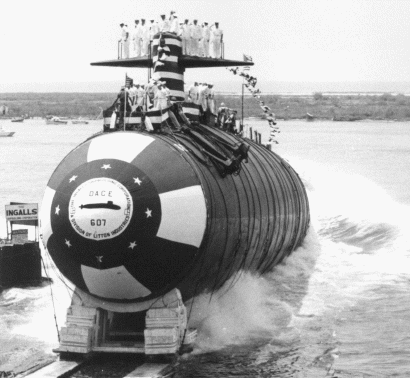 USS Dace SSN 607 was a Thresher Class nuclear attack submarine. The Thresher class also had the bullet shaped hull, single screw, and fairwater planes. It
was smaller than the Sunfish with slightly less tactical capability. One significant difference as I would learn was that Dace was much harder to maintain than the later submarine classes. Dace was commissioned on 4 April 1964,
before the sinking of Thresher. Thus Dace conducted operations for a number of years without the upgrades that resulted from the investigation of the sinking of Thresher.
USS Dace SSN 607 was a Thresher Class nuclear attack submarine. The Thresher class also had the bullet shaped hull, single screw, and fairwater planes. It
was smaller than the Sunfish with slightly less tactical capability. One significant difference as I would learn was that Dace was much harder to maintain than the later submarine classes. Dace was commissioned on 4 April 1964,
before the sinking of Thresher. Thus Dace conducted operations for a number of years without the upgrades that resulted from the investigation of the sinking of Thresher.
In addition, since all of the attack submarines that were in the shipyard at the time of Thresher sinking were delayed to conduct additional inspections and modifications, Dace was one of the few
operational assets available to carry out the Cold War missions against the Soviet forces. As the saying goes, "Dace was run hard and hung up wet."
Dace entered the Electric Boat Shipyard in Groton in the fall of 1968 for a planned six-month "mini-overhaul." The concept was to do only essential inspections and modifications and return the ship to the
fleet as quickly as possible. In support of the short duration of the overhaul, a lot of maintenance was assigned to ship forces and the submarine tenders which supported the operating forces. While this plan sounded good on
paper, it was not a successful strategy since most of the submarines that entered the shipyard under this plan did not come out for years. Shipyards are easy to enter but very hard to exit since the required material conditions
for completion is high and there are numerous unknown or unanticipated issues that arise during the shipyard period.
|
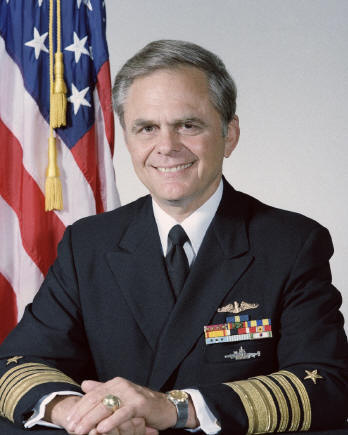
Admiral Kinnard McKee
|
However, the commanding officer of Dace, Commander K.R. McKee, was determined to finish on time and had a lot of contacts, strategies, and skills to make that happen. Commander McKee had established a
truly incredible record as commanding officer on Dace and would ultimately become a four star Admiral and replace Admiral Rickover. When he set his mind to a plan, he usually pulled it off. The engineer officer who started the
Dace overhaul had resigned and was to separate from active duty in the middle of the overhaul.
Commander McKee was determined to ensure his replacement had shipyard experience and a strong reputation in the nuclear power community. Based on his access to Naval Reactors where he had worked before
coming to Dace, he determined that I might be the best available choice as his engineer to take over in the middle of overhaul. After all, I was in the shipyard and knew the challenges and understood test programs. He was not
deterred by the commitment that I not be transferred until the commissioning of Sunfish. So, off to Dace I went. I relieved as engineer officer in January 1969. Also of note, I was married in 1 February 1969 to a beautiful young
lady who was a bit na've, very brave, very capable, and still my main anchor after 43 years.
The challenges of Engineer in a shipyard overhaul are similar to new construction but more complex due to the requirement to maintain control of the ship systems and reactor, train for the resumption of
operations, maintain ship cleanliness, and in the case of Dace, do a significant amount of overhaul work such as valve and pump maintenance. My experience with many of these additional tasks was limited to my time as weapons
officer on Sargo, where the standards for maintenance and particularly system control were a bit looser than in a shipyard overhaul. However, Commander McKee was very much a presence to ensure all went correctly and the members
of the engineering department were well trained and led so that we stayed out of the spotlight of schedule delays. Commander McKee had also convinced Admiral Rickover that we were so good and the overhaul so short that we did
not require a Post Overhaul Reactor Safeguards Examination (PORSE).
At the time I did not realize how significant a coup that was, but it may have been the only time before or since that the rules for the PORSE requirement were waived. As a result, the Dace overhaul
proceeded with little schedule delay and we proceeded to sea trails in the spring of 1969. Post overhaul sea trials contain most of the elements of new construction with the significant difference that Admiral Rickover was not
involved.
The sea trials were generally successful with one significant glitch: the ship could not submerge in the manner calculated. It turned out that some of the lead ballast had not been reinstalled or
accurately calculated. With that issue resolved, trials were completed and Dace rejoined the fleet as a member of Submarine Squadron 10 at State Pier in New London, Connecticut with USS Fulton (AS 11) as the tender.
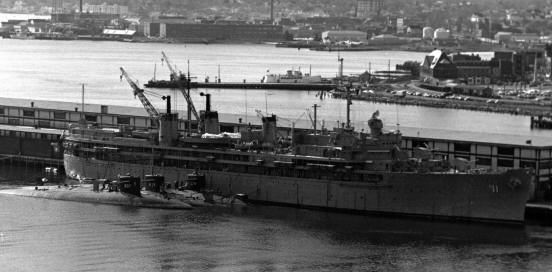
USS Fulton (AS 11)
Job of a Nuclear Submarine’s Engineer Officer
The job of Engineer of a operational nuclear submarine can be described as three overlapping but distinct tasks: ensuring operations of the nuclear propulsion plant and the ship systems are
conducted in accordance with the established procedures and the necessary discipline to ensure reliability and safety, managing training and qualification of the officers and crew and performance of the personnel duties of
department head, and overseeing and managing the corrective and preventative maintenance of the ship and propulsion systems. In addition, the engineer was a department head and one of the senior officers in the wardroom. This
role required personal qualification as an officer of the deck surfaced and submerged and as a key member of the fire control, damage control and battle stations parties. Of all these responsibilities, I believe the hardest and
most important was the engineer’s role in maintenance.
Dace was a very hard ship to maintain. The systems had not been well designed for maintenance as they were compressed into the hull configuration of the submarine. The systems had experienced a lot of
wear, so many valves leaked and joints were not always sealed. The overhaul had not addressed many of these issues. Anytime a steam or seawater system was opened, I was never sure how hard it would be to get it sealed and
recertified. It only took one failed hydrostatic test or steam test to keep the ship from getting underway on time. Our maintenance periods were short and the tender support shared among many old, tired submarines, which meant
the crew was assigned an oversized role in conduct of difficult maintenance tasks. Our operational obligations were important even though Dace was not a "first line" submarine. That role was being filled by the newer SSN 637
class submarines like Sunfish.
When overhaul sea trials were complete, Dace returned to Submarine Squadron Ten (CSS 10) at State Pier in New London Ct alongside USS Fulton, AS 11. Following return to the fleet, Dace conducted a number
of weapons system calibrations and checks as well as acoustic trials. These trials were all held in the Caribbean with stops in Bermuda, Roosevelt Roads in Puerto Rico, Saint Croix in the Virgin Islands and Grand Bahamas Island
en route to the acoustic and weapons range at Andros Island in the Bahamas. We were accompanied on the trip by a number of wives and for Mary and me, it was the closest thing we had to a honeymoon. The trip was successful and
relatively uneventful and we returned to New London in a fully operational status.
Operations in the Mediterranean
For the following 2.5 years, during which time I was Engineer, Dace was an active and reliable unit of the Atlantic Fleet Submarine Force. Dace participated in many training and development exercises.
Dace successfully completed operational readiness and operational reactor safeguards examinations. During those years, Dace made two deployments of four months each to the Mediterranean Sea (Med) since Dace was no longer
considered the most capable asset to conduct special operations in waters close to Soviet operations. The Med was an extremely challenging, operational area for many reasons.
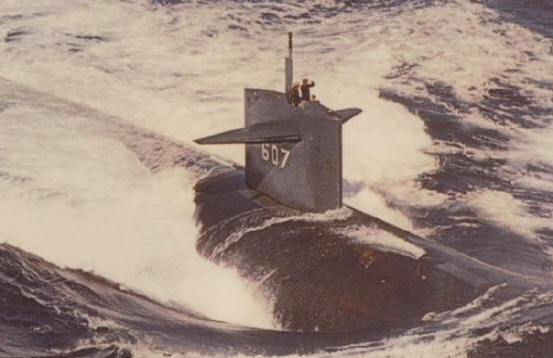
First, there was essentially no support for a nuclear submarine, which meant we were on our own to maintain the ship. In addition, no port had shore power and few ports permitted nuclear ships to come
pier side. This required anchoring out and if the reactor was to be shutdown to support a better liberty schedule, the ship’s power was from the diesel engine and the battery. The diesel engine was undersized so that there was
very little air conditioning and the battery was slowly discharged, a tenuous situation that weighed heavily on the Engineer. Operations in the Med were always unpredictable.
On our initial entry to the Med, we were scheduled to transit to Naples in four days. Three weeks later, we anchored in Athens Harbor, having not gotten to Naples. On another occasion, when we were
scheduled for a weekend port visit to La Spezia, Italy, a diplomatic disagreement as to where we were to anchor resulted in the visit being cancelled and Dace spending the period providing submarine target services to some ASW
aircraft; this was not how we had looked forward to spending the weekend.
At that time, there was a heavy Soviet presence in the Med. The Soviets had no port access in the Med, so they established anchorages with support ships and command units all at anchor. The warships and
submarines would come and go from the anchorages just like to a port. We spent much of our time watching the Soviet fleet and anchorages, which were located in several locations including east and west of Crete, near Libya, and
near Tunisia.
Operating at periscope depth while being close enough to the anchorage to see, but not too close to be detected was always a delicate balance. We also spent some time monitoring action in the Strait of
Sicily, which is one of the busiest shipping corridors in the Med. Operating in those traffic lanes at periscope depth was challenging, exciting, and hazardous. The Soviets also had a number of submarines in the Med, so we were
always on the lookout to monitor their activities, which usually involved submerged following, which was a continual "cat and mouse" activity with the challenges being to not lose contact, not be detected, and avoid collision.
It kept the adrenaline flowing. We were not always successful in this regard, but we were pretty good.
Following our return to New London after the Med deployments and after extended tactical or training deployments in the Atlantic, Dace would be scheduled for a four week maintenance upkeep alongside the
Fulton, AS 11. We were usually one of about three to five units in upkeep. The capacity of the Fulton was limited; so much of the work fell to ships force who had just returned from sea or was deferred which could compromise
reliability or capability. It was during these maintenance periods that I had the most stress and challenge as engineer. Starting the work and doing the work was usually not too hard, although you never knew what would be found
when a system or component was opened for maintenance and inspection. However, the most significant challenge was getting the systems reassembled and retested to resume operations. Dace was designed for operation and not for
maintenance. Components were had to access and hard to isolate if they were in a system. Removal of a component from a pressure system required hydrostatic retesting and many of the old and flexed joints would leak causing more
work.
To make matters more challenging, closing systems and retesting was always late in the availability so problems jeopardized the scheduled operations. The question "Engineer, are we going to be ready to
get underway on time?" was always a challenge. In retrospect, I believe that one of the most significant improvements in submarine design has been the improved ability to successfully conduct maintenance. Considerations of
maintainability were a design requirement in all later class submarines. One of my final challenges as engineer was to discharge resin from the reactor plant purification system at sea. That required some infrequent operations
of the reactor plant including an entry into the reactor compartment at sea and operation with the reactor shutdown while the resin from the ion exchanger was blown overboard. Seal welds had to be cut and valves not frequently
operated had to work properly: Lots of opportunity for things to not go well; Lots of challenge for the engineer. In our case, all went according to plan. As it turns out, for environmental reasons, that was one of the last
times resign was discharged at sea.
After almost three years as engineer, I had orders to move on to become the squadron engineer at Submarine Squadron Two at Submarine Base New London which was across the river from State Pier in Groton.
As a final reminder of the challenges at sea, as we were returning to port from my final week at sea after having been relieved as engineer, I was informed that Mary had gone into labor with our first son. As we approached New
London, the fog became too heavy to permit navigation up the river. So, there I sat at anchor a few miles away from the hospital where my first son was being born and unable to get closer. Fortunately the fog lifted and my son
was slow in coming so I arrived in time for the joyous event and the start of my leave between duty stations.
Read Part 3
Read other articles by Captain William Hicks